Introduction: Overcoming Traditional Roof Inspection Challenges
Roofs serve as a building’s first line of defense, directly impacting structural safety, energy efficiency, and lifespan. Conventional inspections rely on manual climbing, which is time-consuming, high-risk, and often incomplete—requiring 2–3 personnel per day for a single building, with fall-related accidents accounting for 35% of construction incidents, while hidden defects often go undetected. Large commercial complexes, industrial facilities, and historical buildings present additional challenges such as vast roof areas, complex equipment layouts, and diverse architectural structures, making traditional inspections insufficient.
Leveraging dual-sensor infrared and high-resolution optical cameras, long-endurance and wind-resistant flight, and intelligent data processing, MMC’s X8T series drones (commercial and defense variants) provide an end-to-end solution: aerial inspection, data collection, defect analysis, and report generation. This technology achieves zero-contact, full-coverage, and high-precision inspections, boosting efficiency by over five times. The following sections detail how X8T drones are redefining roof inspection through technical adaptability, scenario applications, operational workflow, and practical value.
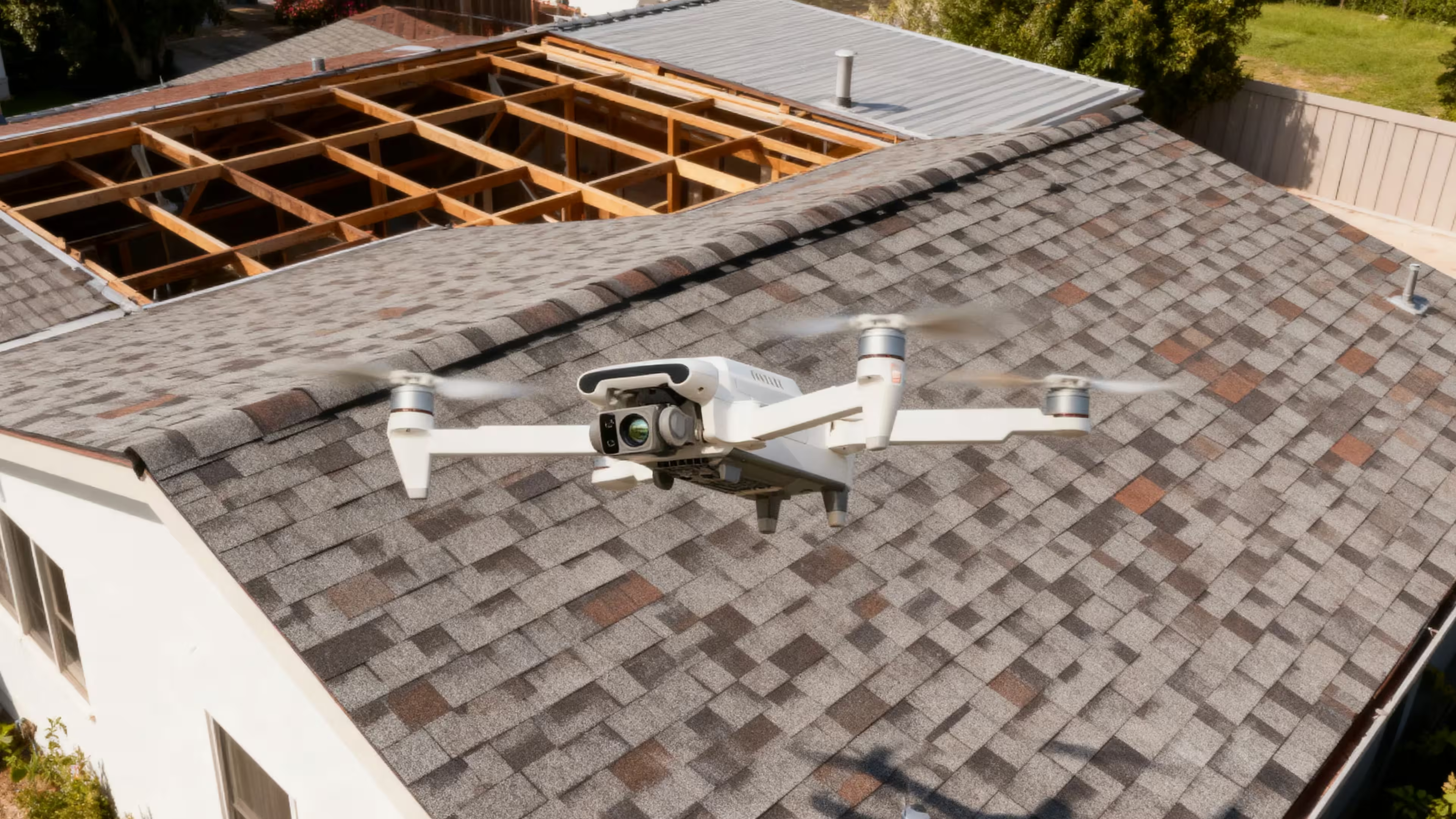
1. Technical Capabilities: Core Advantages for Roof Inspection
Successful roof inspection requires:
- Detection of hidden defects (e.g., waterproof layer leaks, insulation voids)
- Rapid scanning of large areas and complex structures
- Accurate, traceable data for maintenance guidance
The X8T series addresses these demands through three key innovations:
Dual-Sensor Imaging: 640×480 Infrared + 48MP Visible Light
Hidden defects account for over 60% of roof issues. Traditional visual inspections often fail to detect them. X8T drones are equipped with:
- Infrared thermal camera (640×480, 19mm lens, 8–14μm wavelength): Detects temperature anomalies caused by water infiltration, overheating electrical components, or insulation voids.
- Leak Detection: Water in insulation changes thermal conductivity, appearing as cooler zones.
- Electrical Hotspots: Overheated photovoltaic or HVAC components (>70°C) are flagged.
- Insulation Voids: Air gaps create abnormal thermal resistance, showing ≥2°C differences from surrounding areas.
- 48MP visible-light camera (4K/60fps) with 30× hybrid zoom: Captures high-resolution textures for visible defects such as cracks, tile displacement, or bulges. Submillimeter details (0.2mm cracks) can be recorded without physical proximity, mitigating safety risks.
Long-Endurance Flight: 47 Minutes & 12 m/s Wind Resistance
Covering large roofs efficiently is critical. X8T drones feature:
- Single-flight coverage of 1.5 hectares (≈5 football fields), ideal for industrial or commercial rooftops.
- Stable operations in small rain (IP54) and wind up to 12 m/s, ensuring uninterrupted inspections.
- Pre-programmed flight paths: Grid scans, edge-following, or targeted hover inspection, ensuring ≥80% overlap and ±0.1m RTK positioning accuracy.
Real-Time Transmission & AI Analysis: From Data to Decisions
Inspection value comes from actionable insights. The X8T series provides:
- 20 km real-time transmission via RokLink 5.0, delivering infrared and optical imagery to the ground station.
- AI-powered defect recognition: Automatically identifies hotspots, leaks, cracks, and assigns coordinates, size, and risk level.
- Rapid report generation: Within 10 minutes, produces PDFs with defect maps, side-by-side thermal/visual comparison, and maintenance recommendations, easily integrated with BIM systems.
2. Scenario Applications: From Commercial to Historical Roofs
Commercial Complexes: Equipment Clusters & Waterproofing
- Equipment thermal scanning: Identifies defective PV cells and overloaded HVAC components (>80°C).
- Waterproofing analysis: Low-altitude slow patrols (5–8m) detect cold zones indicating leaks.
- Data stitching & 3D modeling: Generates roof orthophotos (5cm/pixel) and locates defects accurately.
Case: 28,000 m² commercial roof inspected in 94 minutes with 2 flights, identifying 12 PV defects and 3 leak zones—8× faster than manual inspection, avoiding high-risk climbing.
Industrial Facilities: Structural Corrosion & Insulation
- Detects thermal bridges caused by steel corrosion and insulation detachment.
- Band-scan flights with AI calculate defect areas and create maintenance priority maps.
- Stable flight ensures accurate data in wind-prone suburban factories.
Historical Buildings: Non-Contact Preservation
- Detects wood rot and insect damage via thermal anomalies (≥3°C difference).
- Identifies loose or missing tiles with 48MP zoom and AI recognition.
- GPS-denied autonomous flight ensures safe hovering near fragile structures.
Case: Qing dynasty residential complex scanned in 2 hours, identifying 23 loose tiles and 7 missing areas, avoiding structural damage.
3. Standardized Workflow: From Data Capture to Maintenance Verification
- Flight Planning: Tailored grid, edge-following, or targeted hover paths based on roof type and obstacles.
- Data Acquisition: Simultaneous thermal video and optical images with real-time quality control.
- Defect Analysis: AI categorizes defects; engineers perform high-risk verification.
- Reporting & Verification: Generate thermal maps, visual comparisons, and maintenance guidance. Post-repair scans validate effectiveness, closing the inspection-maintenance loop.
4. Practical Value: Efficiency, Safety, and Cost Optimization
- Efficiency: 5–10× faster than manual inspections; a 15-hectare industrial park inspected in 3 days versus 30 days manually.
- Cost Reduction: Less manpower (70% savings), minimal equipment, near-zero risk exposure.
- Safety: Zero-contact inspections eliminate fall hazards; stable hover prevents collisions in complex or windy conditions.
Conclusion: Redefining Roof Inspection Standards
MMC X8T drones combine dual-sensor imaging, long-endurance flight, AI-powered analysis, and non-contact operations to transform roof inspections. From commercial and industrial buildings to historical heritage sites, X8T drones convert traditional pain points into technological strengths—boosting efficiency, reducing costs, and maximizing safety.
Future upgrades, including AI-based predictive maintenance, hydrogen fuel-cell extended endurance (>2 hours), and multi-drone collaborative operations, promise fully autonomous, predictive, and lifecycle-oriented roof management, making X8T not just a tool but a technological shield for building safety.
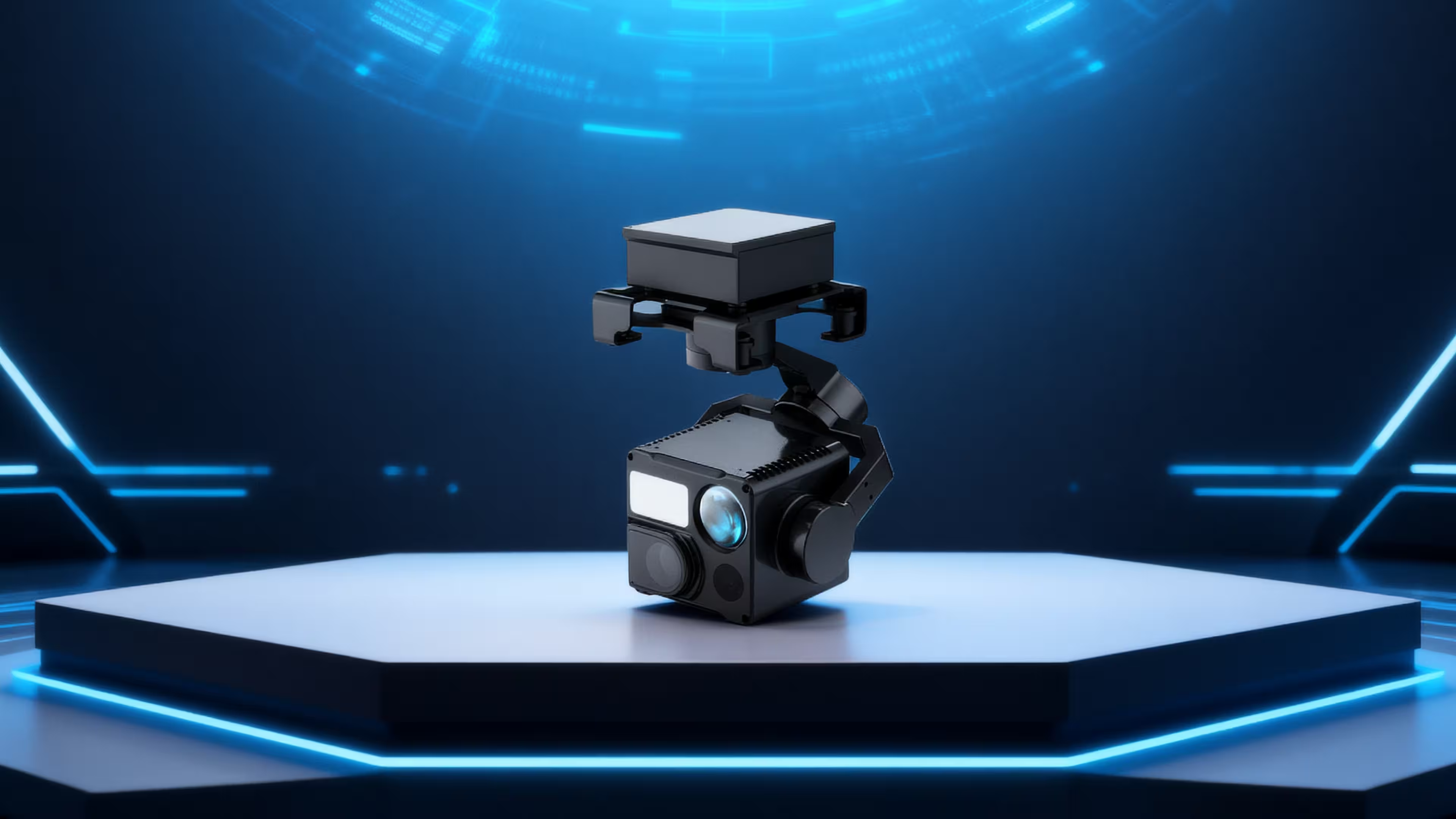
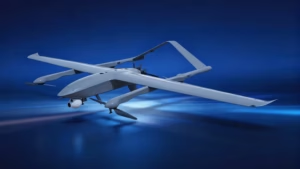
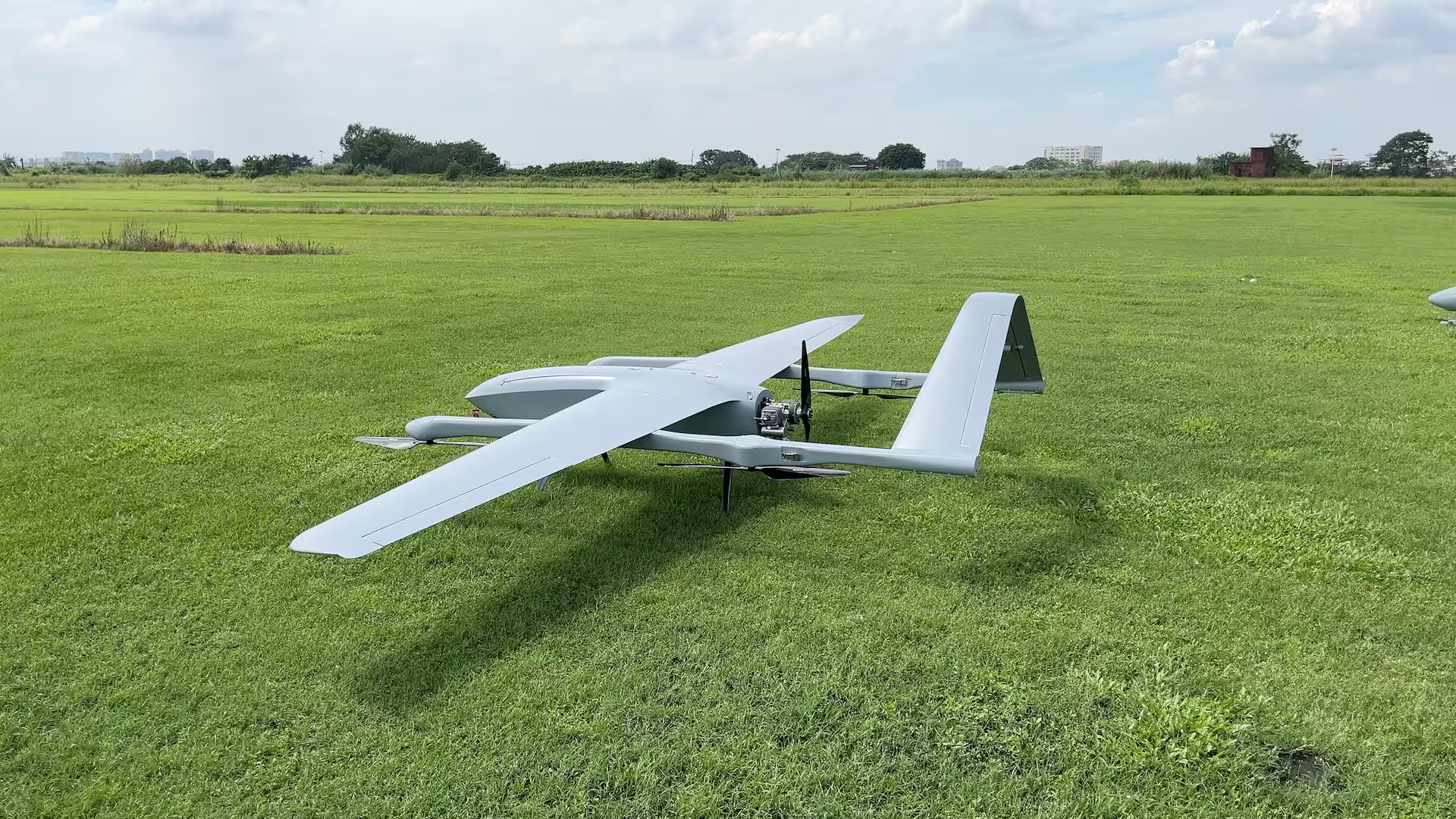
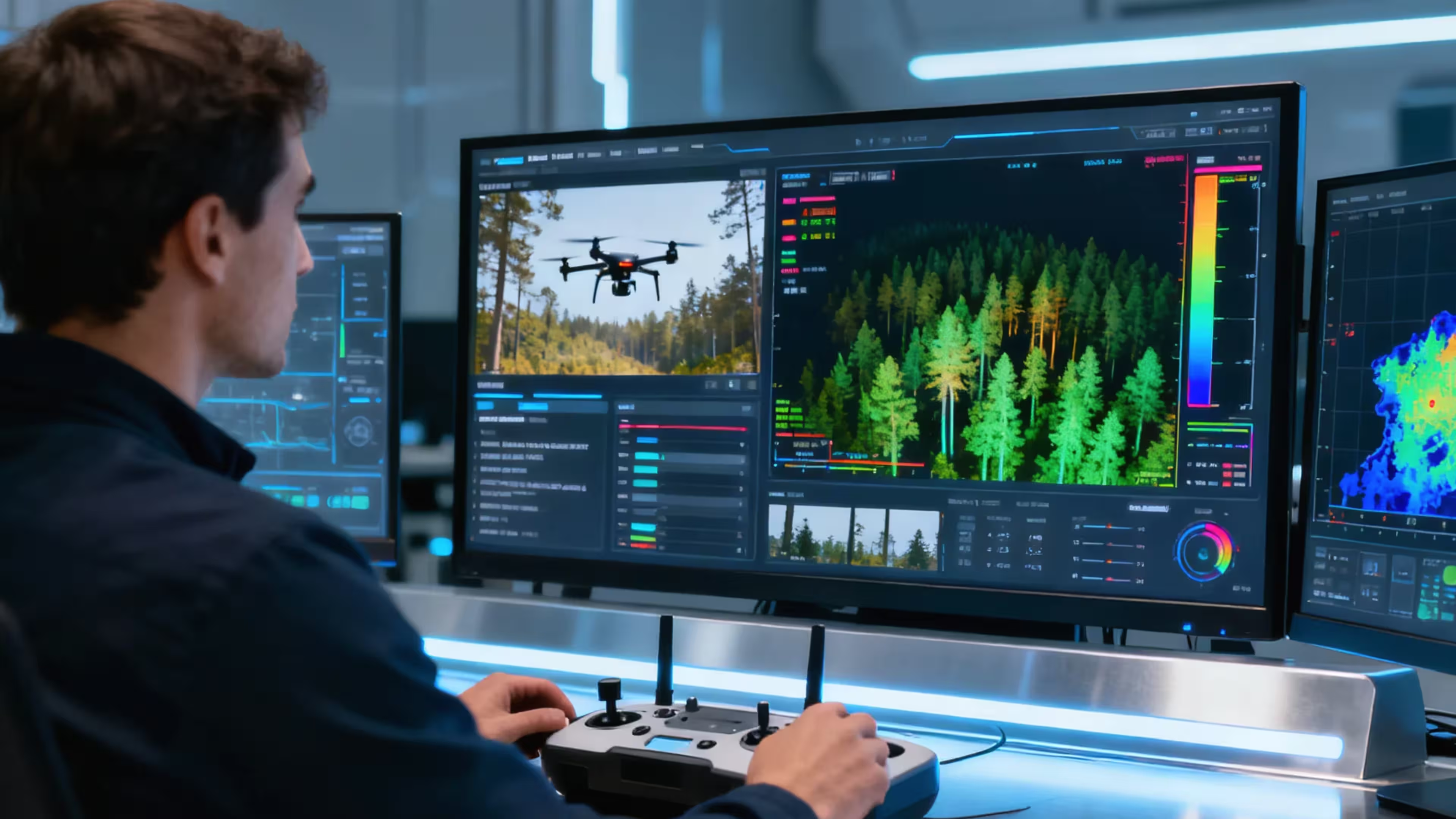

Comments